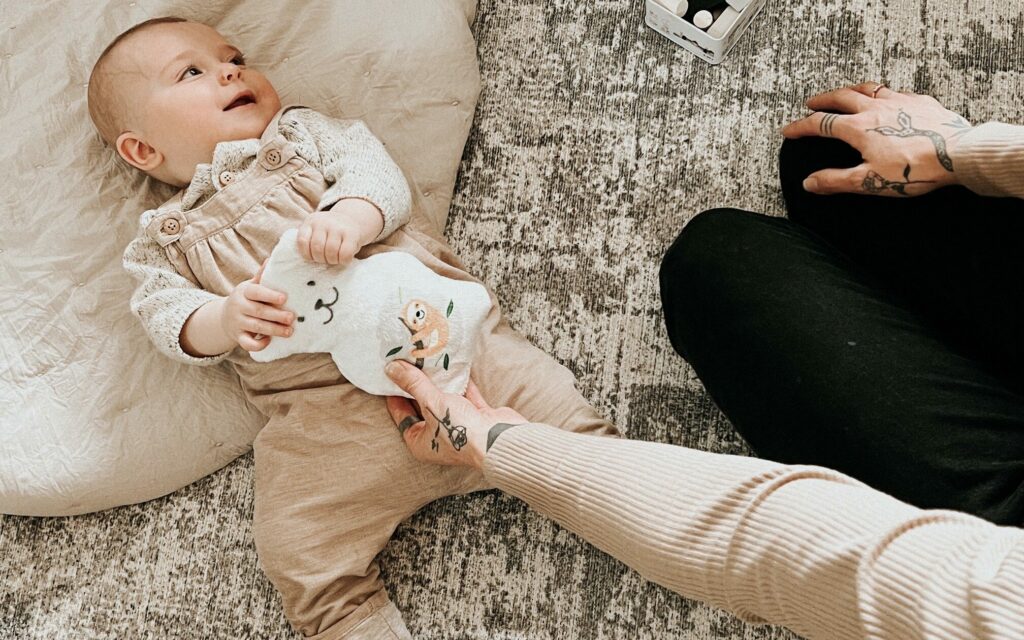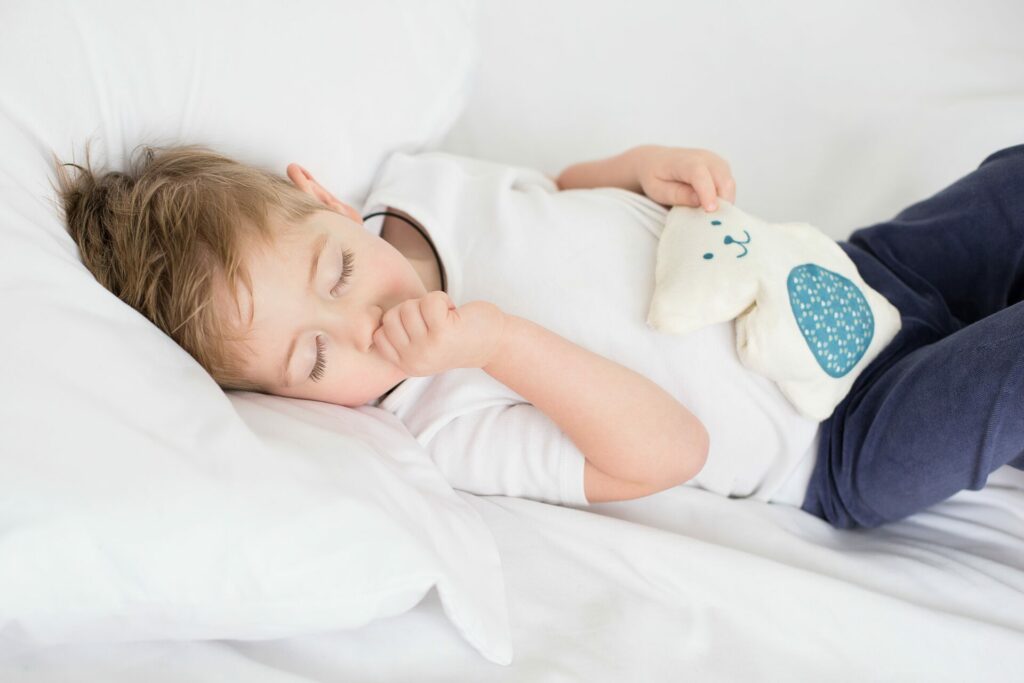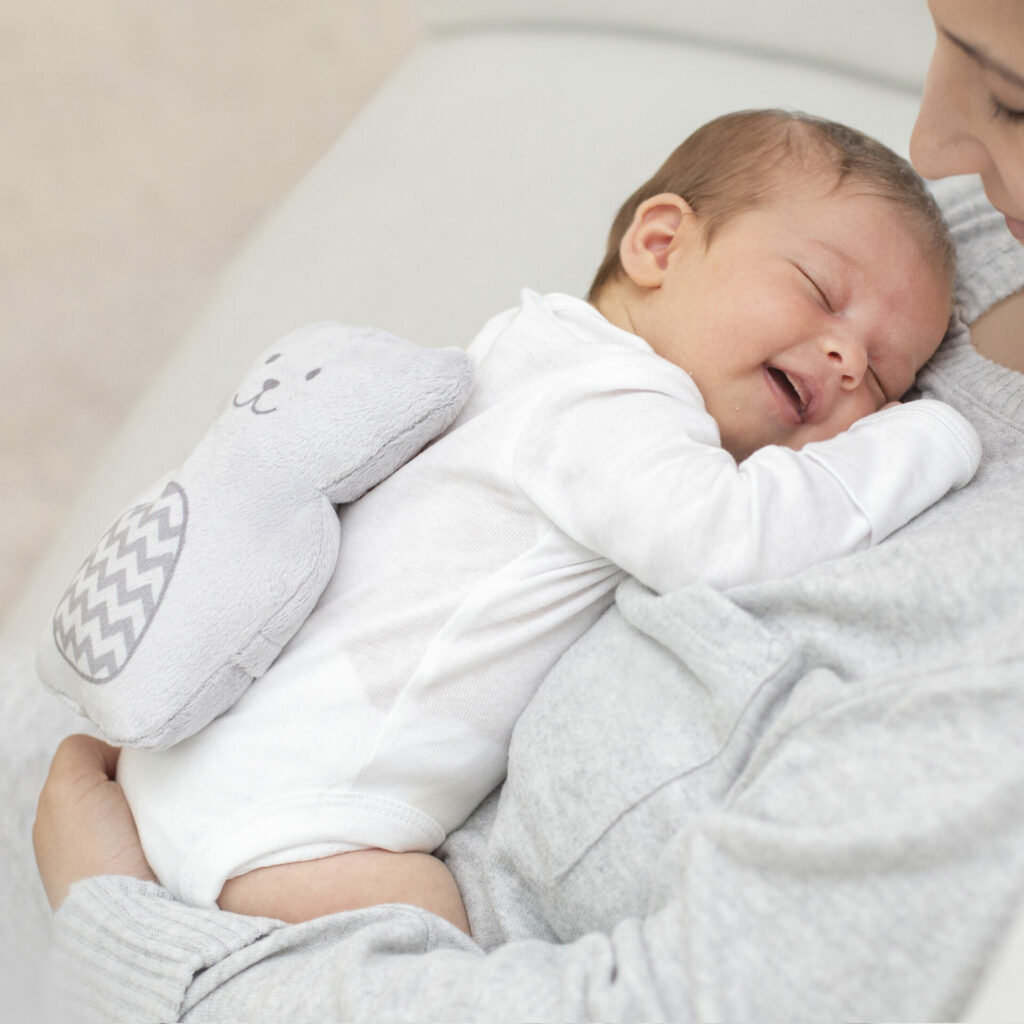Constipation in children is very common—and yet it can take a while to be diagnosed and therefore treated—because its symptoms can be different from those experienced as an adult. Here’s a quick look at the main symptoms and the natural solutions that can be put in place quickly to relieve your child.

How does constipation manifest itself in children?
Pediatric constipation often goes unnoticed because its symptoms are not necessarily similar to those of chronic constipation in adults.
In fact, constipation in children can cause
- Severe stomach ache
- A drastic reduction or even complete loss of appetite—and even nausea
- Pain during defecation and even, in the long term, faecal incontinence… This can have serious consequences for your child’s self-esteem.
It is therefore essential to consult a doctor at the first alarming signs—especially if you notice that your child defecates less than 4 times a week.
Parent tip: beware, contrary to what you might think—your child can be constipated even if their stools are soft when they defecate… In fact, chronic constipation can lead to the formation of “plugs” in the intestine which, when evacuated, result in very soft stools.
What causes paediatric constipation?
Paediatric constipation can be caused by many factors and often occurs at the age of potty training, but it can occur as early as 6 months of age. It is usually referred to as “functional,” meaning that it does not have an organic etiology (i.e., it is not the result of an organ dysfunction).
Encopresis
In many cases, constipation occurs when the child has had a painful bowel movement and, in order not to suffer, holds the stool. This is called encopresis. This leads to alternating episodes of constipation and incontinence, due to the formation of faecal impaction (the famous “plugs”, mentioned above).
The goal: soft, painless stools!
To relieve and cure your child, a series of actions must be implemented with the help of your doctor:
Tip 1: Keep an eye on the physical signs
Does your child squat with their heels stuck under their buttocks? Do they rock or walk stiffly on tiptoe? Do they cross their legs and look uncomfortable? If so, there is a good chance that they are trying to hold in their stool and that their urge to defecate is disappearing. At these times, you can encourage your child to relax and loosen the muscles in their body.

Tip 2: Change your attitude
For many parents, the fact that their child soils his or her underpants is a source of immense frustration… We often think (wrongly!) that our child is even doing it on purpose. But this is not the case! As your child holds back to avoid pain, their stool becomes harder and faecal incontinence comes in because of the engorgement that occurs around the hard stool stuck in their rectum.
Tip 3: Adjust your routine
It may sound strange, but making time in your child’s routine for bowel movements can make a big difference. If you are “regular”, you will probably have a bowel movement at about the same time each day. The idea is to encourage your child to develop similar habits. A good time to do this is in the morning after lunch (ideally within an hour) and you should encourage your child to sit on the toilet twice a day for a few minutes.
Parent tip: To make evacuation easier, consider offering your child a small booster seat, such as the squatty potty!
Tip 4: Accept the daily treatment of stool softeners
To ease bowel movements and prevent blockages, your doctor or paediatrician will probably prescribe stool softeners to be taken daily over an extended period of time. While many of us naturally prefer to avoid medication—especially in the long term—these laxatives are safe and it is important to follow your doctor’s advice and give them to your child if appropriate. It is also important to keep an eye on the balance and adjust the dosage according to the response to the laxatives.
Tip 5: Get moving as a family
It’s not scientifically proven, but many parents find that moving around stimulates bowel movements. You’ve probably experienced it yourself—when your child says they have to poop within 5 minutes of arriving at the park 🙂 Try to set aside half an hour of outdoor time with your child every day and encourage them to run around playing hide and seek or ball games, for example!
Tip 6: Make a small shift in diet
Getting your child to eat more vegetables and fruit can be a daily struggle … and even more so when your child is constipated! Their diet should include whole-grain cereals, fruit and vegetables—especially green vegetables EVERY DAY! And, to help your child’s body absorb fibre, it’s important to get them to drink plenty of fluids.
Parent tip: consider buying your child a nice insulated water bottle so that they always have fresh water to hand! And, if your child is fussy, you can hide vegetables in a smoothie in the morning—kale and spinach are easily overlooked with a little mango and pineapple!
Tip 7: Massage your child
Last but not least, massage your little one. When done properly, abdominal massages help with bowel movements and loosen up the stomach muscles. The key is to massage your child in a comforting atmosphere and make sure the room temperature is warm enough (as are your hands!) for your child to really relax.
Relieving your child’s constipation pain
If your child suffers from tummy aches, a hot-water bottle that releases humid heat can be extremely useful in soothing their pain naturally. The Béké-Bobo therapeutic teddy bear is a natural painkiller that has been effectively treating tummy aches for over 20 years, as hundreds of parents around the world have testified.
Dealing with constipation in children is a long process that can be stressful for parents and children. It usually takes at least 6 months to really regulate bowel movements without the help of laxative treatment, and then you have to be vigilant for relapse. But if you stay positive and keep smiling, you will get there faster!


